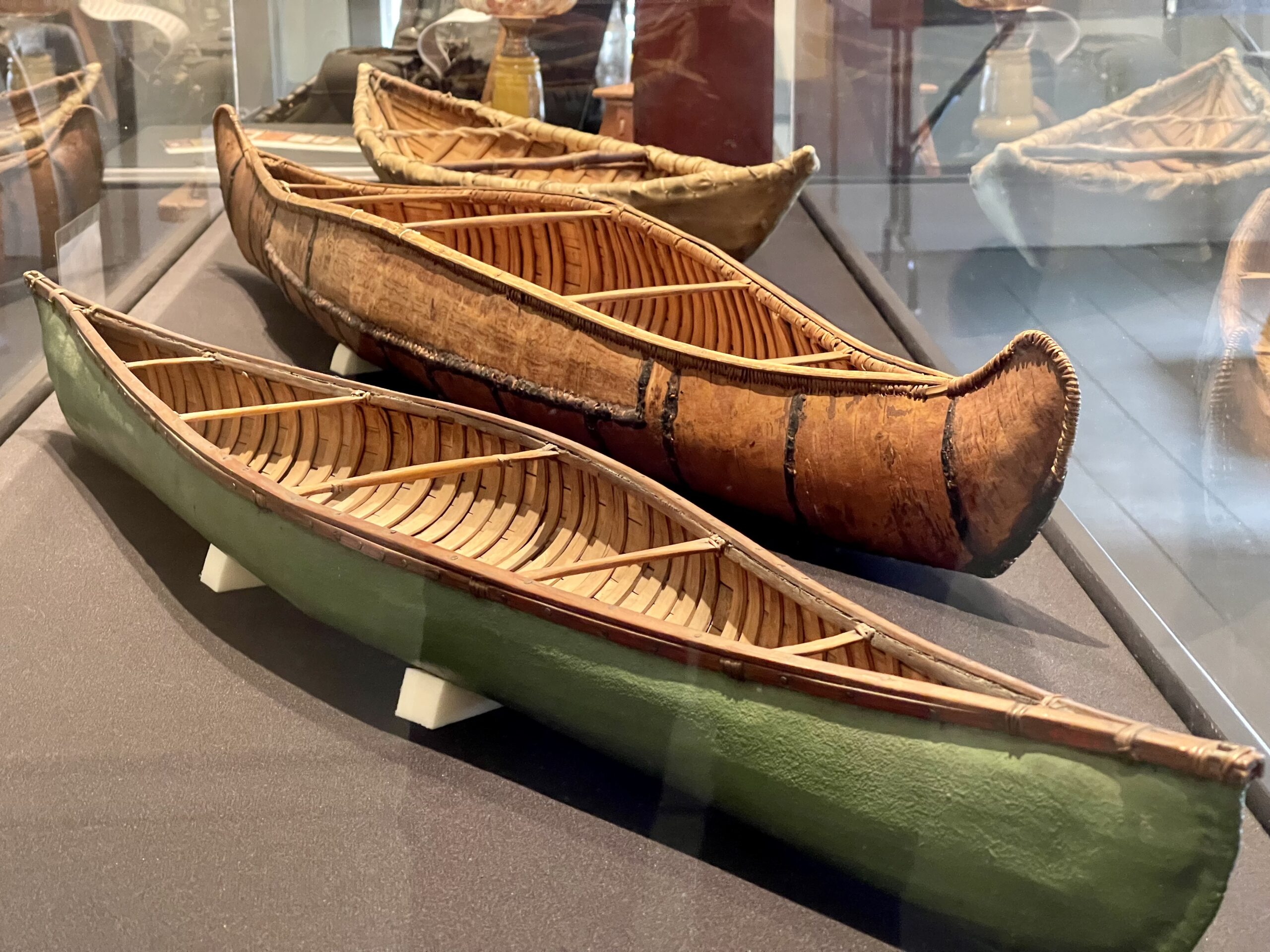A Legacy of Cultural Preservation
Based on his own observations and the information shared by Indigenous canoe makers, including Wolastoqey elder Peter Bear (1849-1931) of Neqotkuk (Tobique First Nation), Adney produced a manuscript that is still considered one of the most important documents to have ensured the appreciation and survival of this traditional art form. The three models being exhibited demonstrate not only Adney’s skills but also his attention to meticulous detail and authenticity in preserving Indigenous craftsmanship.
The Canoe Models on Display
Wolastoqey Canvas Canoe Model (1930)
As shown in Image 1, this model by Major Edwin Tappan Adney (Canadian, born in USA, 1868-1950) was created after studying canoes made by Peter Bear (Wolastoqiyik, 1849-1931). This 1930 painted canvas, cedar, and spruce model measures 10 x 16 x 100 cm overall. It was a gift from Major Edwin Tappan Adney to the New Brunswick Museum in 1947 (1947.56A) and represents a canvas canoe built in the birchbark fashion from the period 1890-1900.
Mi’kmaw Rough Water Canoe Model (c. 1930)
Image 2 shows a model created by Major Edwin Tappan Adney around 1930, crafted from birchbark with cedar, spruce root, and spruce gum. Measuring 12 × 121 × 18 cm overall, this artifact was gifted to the New Brunswick Museum by Major Adney in 1947 (1947.57A). The model is based on canoes used on the Restigouche River, New Brunswick, prior to 1890.
Wolastoqey Moosehide Canoe Model (1935-1938)
The third model, seen in Image 3, was created by Major Edwin Tappan Adney between 1935-1938, based on canoes made by Peter Bear. This moosehide, spruce, and cedar model measures 14 × 92 × 26 cm and was gifted to the New Brunswick Museum by Major Adney (X8181.1). This type of canoe was used by hunters to transport their hides, furs, and moose meat out of the woods after the winter hunt. The last known builder of this type of canoe was Peter Bear of Neqotkuk (Tobique). This model is crafted at 1/5 scale by E.T. Adney, based on a model originally created by Peter Bear.
Exhibition Details
The models are on display at Connell House, 128 Connell Street, Woodstock, NB E7M 1L5. Visitors interested in viewing these remarkable artifacts can find more information through the Carleton County Historical Society’s website at https://www.cchsnb.ca or by calling 506-328-9706.







